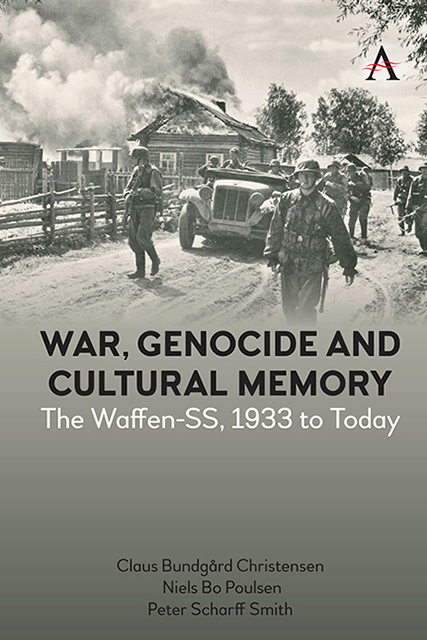Book contents
- Frontmatter
- Contents
- About the Authors
- Foreword
- Chapter One Introduction
- Part I The Organisational and Military History of the Waffen-SS
- Part II Ideology, Discipline and Punishment in the Waffen-SS
- Part III A European Nazi Army: Foreigners in the Waffen-SS
- Part IV Soldiers and War Criminals
- Part V Waffen-SS After 1945
- Epilogue The Nazi’s European Soldiers
- Appendix
- List of Abbreviations
- Bibliography
- Index
Chapter Ten - Eastern European Waffen-SS Soldiers of Non-German Ethnicity
Published online by Cambridge University Press: 08 June 2023
- Frontmatter
- Contents
- About the Authors
- Foreword
- Chapter One Introduction
- Part I The Organisational and Military History of the Waffen-SS
- Part II Ideology, Discipline and Punishment in the Waffen-SS
- Part III A European Nazi Army: Foreigners in the Waffen-SS
- Part IV Soldiers and War Criminals
- Part V Waffen-SS After 1945
- Epilogue The Nazi’s European Soldiers
- Appendix
- List of Abbreviations
- Bibliography
- Index
Summary
The research of the soldiers in the Waffen-SS has by and large been focused on those who were recruited in the North-western European Germanic countries, such as Holland and Scandinavia. As we have discussed these volunteers had strong ideological motives and to a large extent came from Fascist or Right-Wing extremist groups in their home countries. The same tendency can also be found among soldiers from other parts of Europe such as France and Italy, but in these cases, and even more so when it comes to Eastern Europeans in the Waffen-SS the reasons behind their entry was complex: coercion and material factors in many cases played a much bigger role than ideological motivation. These groups have until relatively recently remained in the periphery of research and have not attracted the same scholarly attention as, for instance, the Scandinavian volunteers. In his classic 1966 study, George Stein included a chapter about the Baltic and Muslim volunteers. He concluded that these units, except the three divisions raised in the Baltic States, were practically useless in combat, even when it came to less demanding anti-partisan tasks. Published a few years later, Alexander Dallin's essay The Kaminsky Brigade: A Case-Study of Soviet Disaffection was an in-depth study of a single unit, whose members were recruited in Russia. Apart from Stein's monograph and Dallin's essay, the Waffen-SS soldiers from Eastern Europe were a virtually untouched subject by academic scholars studying the Third Reich until a few notable studies have surfaced during the last two decades. The East European soldiers in German armed service did receive some attention earlier from authors with an interest in obscure military units or from revisionist far right historians. A third approach was offered by scholars from émigré groups studying the history of their nation under Soviet and Nazi domination. They often tended to neglect or downplay the fact that many (but far from all) east Europeans in German armed service fought within the SS in favour of an uncritical and heroic interpretations of the soldiers as reluctant cannon fodder or misguided idealist who merely fought for their nation's survival. Thus, several books written from this perspective treated the subject of collaboration with Nazi Germany and the SS as a minor one, within a greater theme of national assertion and survival for small nations squeezed between the great powers Nazi Germany and the Soviet Union.
- Type
- Chapter
- Information
- War, Genocide and Cultural MemoryThe Waffen-SS, 1933 to Today, pp. 199 - 224Publisher: Anthem PressPrint publication year: 2022

